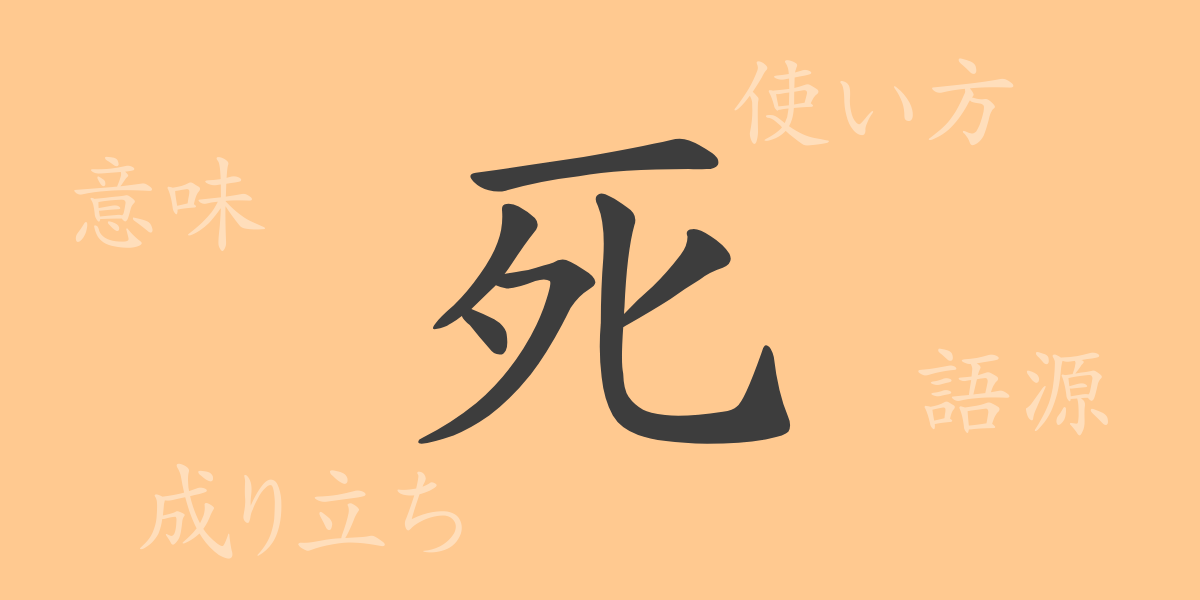Life and death are eternal themes for humanity. The 常用漢字(jouyou kanji) “死(し)” carries a profound and powerful meaning deeply rooted in Japanese culture and language. In this article, we explore the history, meaning, usage, idioms, and proverbs associated with the kanji “死(し).” Let’s delve into the world of this kanji while appreciating the cultural weight behind the words.
Origins of 死(し)
The kanji “死(し)” evolved from an ancient Chinese pictograph representing death. Originally, it depicted the act of burying a dead person’s bones. Over thousands of years, this character underwent various transformations to become the modern kanji we use today, symbolizing the concept of death.
Meaning and Usage of 死(し)
The kanji “死(し)” signifies the end of life, or the death of a living being. However, it also has metaphorical uses, representing “desperate situations” or “cessation of function.” Japanese language features numerous expressions utilizing this kanji, showcasing its broad range of applications.
Readings, Stroke Count, and Radical of 死(し)
The kanji “死(し)” has various readings in Japanese.
- Readings: The on’yomi (音読み) reading is “シ(し),” and the kun’yomi (訓読み) reading is “し・ぬ.”
- Stroke count: “死(し)” consists of 6 strokes.
- Radical: The radical is 歹(がつへん).
Idioms, Phrases, and Proverbs Using 死(し) and Their Meanings
There are many idioms, phrases, and proverbs in Japanese that contain the kanji “死(し).” Here are a few examples:
- 死活問題(しかつもんだい): A critical issue related to life and death.
- 死を賭して(しをとして): To undertake something with utmost seriousness, risking one’s life.
- 死人に口なし(しにんにくちなし): The dead cannot speak, implying that the truth cannot be revealed once someone has died.
- 一死報国(いっしほうこく): To sacrifice one’s life for the sake of the country.
- 死して屍拾う者無し(ししてしかばねひろうものなし): Once dead, no one cares about the deceased, meaning that no one will look after you once you are gone.
Conclusion on 死(し)
The kanji “死(し)” conveys a powerful message through its mere presence. Its various uses in Japanese illustrate the strength of language. Through idioms and proverbs reflecting views on life and death, we can gain a deeper understanding of “死(し).” Contemplating the sanctity of life and the inevitability of death through language can be crucial for our spiritual growth.

























